|
For the Text of this Story For an Update on this Story
|
|
The most famous painting of the event is Alfred Douglas' Purchase of Manhattan Island by Peter Minuit, 1626.
|
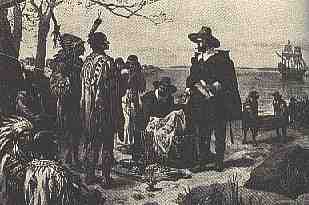
|
|
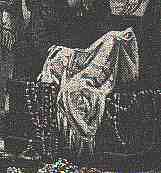
|
Beads and cloth spill out of the box in the center of the picture as Peter Minuit beckons toward it.
|
|
The first person to mention beads was, as far as I can tell (and no one has come up with an earlier source since 1987), Martha J. Lamb (1877) History of the City of New York. This picture accompanied the text in which she listed beads as part of the purchase price. It was often reproduced
|

|
|
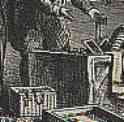
|
The Dutchman in the center leans over a large box and holds a string of beads in his left hand, motioning to them with his right. In front of him is a smaller box with other beads in a rosary, a highly unlikely object for fiercely Protestant Holland to be trading.
|
|
Martha Lamb had two pictures of this event, this one captioned Trading with the Indians.
|
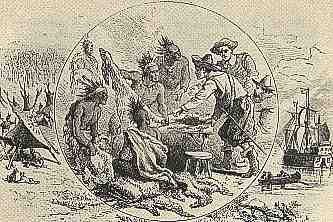
|
|
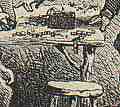
|
Wasn't it nice of the "Indians" to provide the Dutch with a little table and a three-legged stool?
|
|
The Memorial History of New York (1892) by J.G. Wilson was influential in selling this idea, as it was the standard work on New York City history for a long time. The text includes beads, as does the accompanying often-reproduced picture. The native woman kneeling to the left of the box is examining a strip of something. Perhaps it is cloth or maybe wampum.
|

|
|
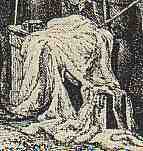
|
The beads are harder to see, but they are draped along the right-hand side of the cloth on top of the box in the center
|







